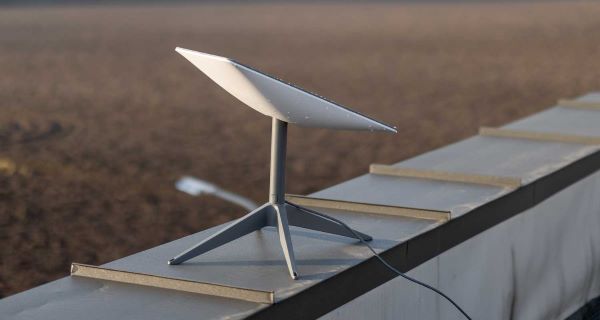Starlink beams first text messages to phones
The ability to complete the handoffs will be crucial since each Starlink satellite only stays visible in the sky for several minutes before orbiting out of view.
- Advertisement -
SpaceX’s cellular Starlink system has successfully relayed text messages to and from smartphones on the ground via the T-Mobile network, for the first time since launching into orbit.
SpaceX announced the achievement a week after the company launched six Starlink satellites that are designed to operate as orbiting cell towers in space.
“On Monday, January 8, less than 6 days after launch, we sent and received our first text messages to and from unmodified cell phones on the ground to our new satellites in space using T-Mobile network spectrum,” the company said in a report.
SpaceX didn’t elaborate on the test, such as the speeds, latency, or other limitations. But the company did publish a photo showing two iPhones using the Starlink satellite to relay the text messages, although it looks like one of the sent message was lost during the transmissions.
The messages on Jan. 8 were also initially transmitted over just one of the “Direct to Cell” Starlink satellites. Whether the other five satellites ended up relaying text messages too was left unclear; SpaceX didn’t immediately respond to a request for comment.
Still, the report notes that “launch and early tests of the technology were all completed without issue.” The company adds that it had overcome serious challenges to transmit the text messages from phone to satellite. This includes how many of today’s consumer smartphones only come with “low gain antennas” meant to connect to nearby cell towers, not satellites orbiting high above.

In response, SpaceX has been outfitting some Starlink satellites with newly developed equipment that can relay phone signals even while orbiting the Earth at 340 miles away. “Our team developed custom silicon onboard the satellite that is optimized for this application and reduces power and cost on the satellite,” the company wrote. “We also developed large 2.7 m x 2.3 m advanced phased arrays that use extremely sensitive radio receivers and high-powered transmitters for communicating with cell phones from space.”
The same satellites can also communicate using 4G technology using an LTE modem onboard. But unlike stationary cell towers, Starlink satellites orbit the Earth at 17,000 miles per hour, making it difficult for them to maintain a steady signal to someone on the ground.
“For the vehicles to perform like a true cell tower in space, handoffs between vehicles and on the ground must be completely seamless to the user,” the company said. “To accomplish this, we architected the system including satellite altitudes, beam size and placement, elevation angles, and number of satellites, such that we are just at the edge of physics where LTE is achievable and reliable.”
The ability to complete the handoffs will be crucial since each Starlink satellite only stays visible in the sky for several minutes before orbiting out of view. The FCC has cleared the company to start testing the cellular Starlink system in over two dozen locations using 840 satellites that will launch in the coming months. But the company is still waiting for full FCC approval to operate the service commercially in the US, amid concerns about the technology causing radio interference.
In the meantime, SpaceX added that it plans on expanding the testing to include greater coverage. The company is aiming to launch the cellular Starlink service for T-Mobile customers, starting with text messages, later this year. SpaceX then plans on expanding the service to support voice and data in 2025.
Source:techfocus24
- Advertisement -
- Advertisement -


